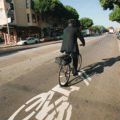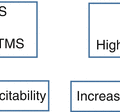© Springer International Publishing AG 2018
Stefano Masiero and Ugo Carraro (eds.)Rehabilitation Medicine for Elderly PatientsPractical Issues in Geriatricshttps://doi.org/10.1007/978-3-319-57406-6_4040. Peripheral Neuropathies and Rehabilitation of Older Patients
(1)
Department of Neuroscience, University of Padua, Padua, Italy
(2)
Department of Geriatrics, Neurosciences and Orthopaedics, Università Cattolica del Sacro Cuore, Rome, Italy
(3)
Don Carlo Gnocchi Onlus Foundation, Milan, Italy
Keywords
ElderlyPeripheral neuropathyRehabilitationOutcome measuresDiabetes40.1 Introduction
Aging is associated with an increased incidence of peripheral neuropathy, with consequent gait impairment and increased incidence of falls. A recent prospective population-based study showed that the prevalence of polyneuropathy in the general middle-aged and elderly population is at least 4% and increases with age [1]. The most common causes of neuropathy in elderly are idiopathic, diabetic, iatrogenic (mainly secondary to chemotherapy), or due to nutritional deficiencies.
A systematic review by Ward et al. including eight epidemiologic studies (six cross-sectional and two longitudinal) in older adults showed that abnormal sensory and motor peripheral nerve function not only is associated with reduced lower limb motility and general mobility but is also predictive of poor physical function and disability [2].
It has been calculated that almost one-third of people >65 years complain of sensory symptoms due to neuropathy [3] and this is associated with greater morbidity and mortality [4].
Physical rehabilitation is frequently recommended in patients affected with peripheral neuropathy, although evidence-based efficacy is lacking. In the only Cochrane review on exercise in patients with peripheral neuropathy, which included any randomized or quasi-randomized controlled trial comparing the effect of exercise with no exercise therapy or drugs or nondrug treatment on functional ability, it resulted that there is inadequate evidence to evaluate the effect of exercise on functional ability in people with peripheral neuropathy [5]. Also a review on physical rehabilitation for critical illness myopathy and neuropathy has found no proper studies to be considered [6].
The main reasons accounting for the scarce evidence-based data are likely the absence of standardized rehabilitation protocols and the lack of proper, reliable, and sensitive outcome measures. Moreover, the heterogeneity of the neuropathies, the common presence of comorbidities in older patients, the natural course of the neuropathy, and the physiological aging are all concurrent factors that make it difficult to identify specific rehabilitative programs and outcome measures sensitive to changes.
Keeping in mind these limitations, we will address the role of rehabilitation in the most common neuropathy with known cause, that is, diabetic polyneuropathy, and other peripheral nervous system disorders for which sound studies are available in the literature.
40.2 Diabetic Neuropathy
Despite diabetes mellitus is the most common cause of peripheral neuropathy worldwide, no evidence-based data are available for rehabilitative programs in diabetic peripheral neuropathy.
A recent systematic review [7], which included patients with different causes of neuropathy besides diabetes, identified 11 studies (seven randomized controlled trials, four controlled clinical trials), most of them performed in older diabetic patients with peripheral neuropathy. Oxford levels of evidence and corresponding grade of recommendation were provided for each considered study. The authors concluded that balance training appears to be the most effective exercise intervention and also endurance training is important especially in diabetic neuropathy, helping also glycemic control and body weight. A further small uncontrolled study (12 weeks of moderate or intense aerobic exercise) in diabetic patients with and without neuropathy showed improvement in gait, reaction time, and postural stability in older adults with type 2 diabetes [8]. However, the small size of the study and the lack of an age-matched control group limit the power of the data.
Stay updated, free articles. Join our Telegram channel

Full access? Get Clinical Tree





